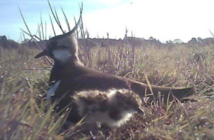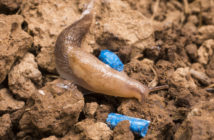Just when farmers are getting the hang of rodenticide stewardship rules, introduced mid-2016, a new study by Reading University confirms that rats in some parts of the country are resistant to some of the most widely-used poison baits.
The report states that the study “shows the massive extent of L120Q resistance across the whole of central southern England.” Co-author Dr Colin Prescott explains that L120Q is the most severe form of resistance identified to date, effective against first generation anticoagulant rodenticides and one or more of the second generation group.
“Moreover, this doesn’t mean the rest of the UK can relax, because lack of sample availability means we just don’t have the data,” he says. “Another concern is that most rats with L120Q resistance carry the gene from both parents. Where this occurs, it suggests most or even all rats with some susceptibility have been eradicated by widespread use of resisted rodenticides, leaving a population of resistant pure-breds.”
The report was commissioned by the Campaign for Responsible Rodenticide Use (CRRU) under its stewardship regime remit to an HSE-led Government Oversight Group (GOG).
CRRU chairman Dr Alan Buckle says the difficulty for farmers, of course, is knowing the resistance status of rats on their own units.
“One effective course of action, but also involving extra work and cost, is to employ a professional pest controller with the necessary qualifications to investigate,” he suggests. “Reading University, for example, offers paid-for resistance analysis of rat tissue samples, from which a farm’s status can be identified and control plans developed.
“For farmers, this exemplifies how there is rather more to rodenticide stewardship than membership of an approved farm assurance scheme or taking a training course. For stewardship to be judged a success by GOG, meaningful and lasting reductions in rodenticide residues carried by non-target wildlife are expected. Without widespread best practice by farmers, enabled and supported by farm assurance and training, this might be an unlikely outcome.”
Specifically and immediately, quoting advice from the UK Rodenticide Resistance Action Group, the report advises against using bromadiolone or difenacoum baits against rat populations known to carry the most severe forms of anticoagulant resistance.
It also finds UK leading the world with the highest number of different genes for resistance in rats. Of nine identified, two more in addition to L120Q confer resistance to first generation anticoagulant rodenticides and one or more of the second generation group.
The report was requested by GOG because it is thought that new stewardship authorisations under the Biocidal Products Regulations, the promotion of best practice through the stewardship regime, and the emphasis in stewardship on the use of alternatives to anticoagulants, will all play a part in managing resistant infestations of rats and preventing their spread.
It also shows for the first time the current spread of resistance mutations in Norway rats. The report will be repeated annually as part of the UK Rodenticide Stewardship Regime’s monitoring procedures.
-ends-




